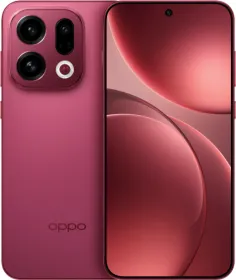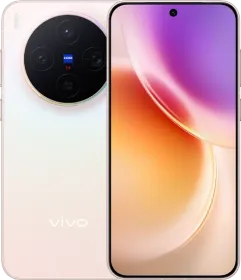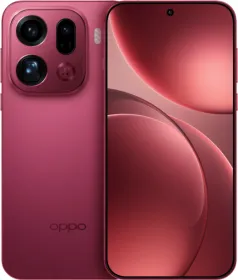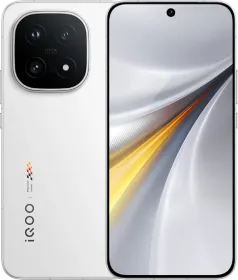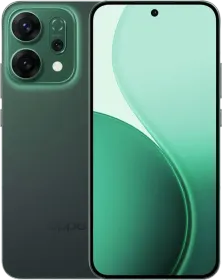Choosing an Android flagship in November 2025 is tougher than ever, especially when three of the most talked-about devices — the Find X9 (review), the OnePlus 15 (review), and the Pixel 10 — take dramatically different approaches while competing in the same premium segment. All devices offer top-tier hardware, polished software, and distinct strengths, but the experience you get depends on what you want the most: raw performance, superior camera hardware, or the best AI integration across the device.
In this article, we’ll help you choose the right Android flagship by comparing design, display, performance, software, camera, battery life, and price.
Find X9 vs. OnePlus 15 vs. Pixel 10: Table of Contents
Find X9 vs. OnePlus 15 vs. Pixel 10: Design



| Oppo Find X9 | OnePlus 15 | Google Pixel 10 | |
| Dimensions | 157 x 73.9 x 8 mm | 161.4 x 76.7 x 8.1 mm | 152.8 x 72 x 8.6 mm |
| Weight | 203 grams | 211 or 215 grams | 204 grams |
| Material | glass / aluminum / glass | glass / aluminum / glass | glass / aluminum / glass |
| IP Rating | IP68/IP69 (1.5m for 30 min) | IP68/IP69K (2m for 30 min) | IP68 (1.5m for 30 min) |
| Colors | Space Black, Titanium Grey, Velvet Red, White | Infinite Black, Ultra Violet, Sand Storm | Indigo, Frost, Lemongrass, Obsidian |
All the phones in this comparison feature punch-hole screens and symmetrical bezels on all sides. However, the Pixel 10 has the thickest bezels of them all (and, simultaneously, the lowest screen-to-body ratio of 86.1%).
Looking at the phones from the back, you’ll realize that the Find X9 and the OnePlus 15 follow a similar approach. Both feature a square-shaped, body-colored camera module protruding from the back panel. While the X9 features individual cutouts for the sensor, the OnePlus 15 features a pill-shaped vertical cutout.
The Google Pixel 10, on the other hand, features a horizontal camera visor, iconic of the Pixel lineup. It is worth noting that the Find X9 is the slimmest phone (and the lightest, though by a very slim margin). However, the OnePlus 15 features a superior IP rating.
While the OnePlus 15 is the largest phone, the Pixel 10 is the most compact.
Also Read: OnePlus 15 vs. OnePlus 13: What’s Changed? A Rs. 72,999 Question
Find X9 vs. OnePlus 15 vs. Pixel 10: Display



| Oppo Find X9 | OnePlus 15 | Google Pixel 10 | |
| Display Size | 6.59-inch | 6.78-inch | 6.3-inch |
| Technology | AMOLED | LTPO AMOLED | OLED |
| Resolution | 460 ppi | 450 ppi | 422 ppi |
| Refresh Rate | 120Hz | 165Hz | 120Hz |
| Peak Brightness | 1800 HBM | 1800 HBM | 2000 HBM |
| Dimming | 3840Hz PWM | 2160Hz PWM |
Among all the phones, the OnePlus 15 has the largest screen, which has both pros and cons. On the one hand, it is bright, supports the highest refresh rate, and has a decent pixel density. However, the phone might feel too big for certain users (and won’t fit in tight pockets either). On the positive side, this is the only phone in the comparison to feature an LTPO screen, i.e., it supports true variable refresh rate.
The Find X9, released today, strikes the right balance between a compact phone and a full-fledged flagship, with its 6.59-inch AMOLED display. It has a slightly higher pixel density, a lower refresh rate, and a higher PWM dimming rate. It also offers almost the same brightness as the OnePlus 15 in high-brightness mode.
If you’re looking for a compact phone with the highest brightness (in this comparison) and a 120Hz refresh rate, consider the Google Pixel 10. Although it also has a lower pixel density than the others and thicker bezels, the phone has a gorgeous front display.
Find X9 vs. OnePlus 15 vs. Pixel 10: Performance

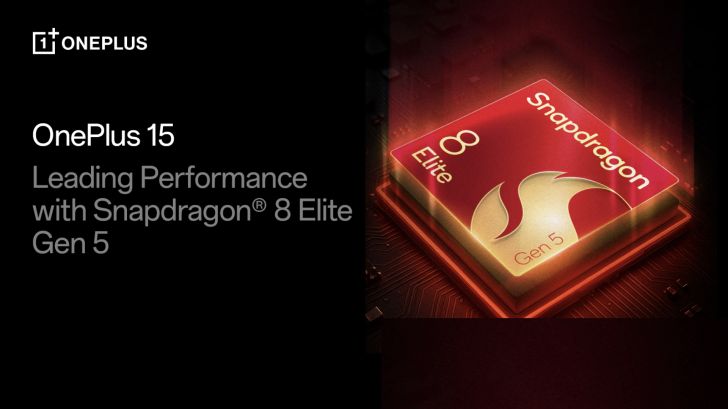

| Oppo Find X9 | OnePlus 15 | Google Pixel 10 | |
| Chipset | Dimensity 9500 | Snapdragon 8 Elite Gen 5 | Tensor G5 |
| Manufacturing Process | TSMC’s N3P 3nm | TSMC’s N3P 3nm | TSMC 3nm |
| Core Configuration | 8 cores: 1 x 4.21 GHz prime cores + 3 x 3.5 GHz performance cores + 4 x 2.7 GHz efficient cores | 8 cores: 2 x 4.60 GHz prime cores + six x 3.62 GHz performance cores | 8 cores: 1 x 3.78 GHz prime core + 5 x 3.05 GHz performance cores + 2 x 2.25 GHz efficient cores |
| GPU | Arm G1-Ultra | Adreno 840 | PowerVR DXT-48-1536 |
| NPU / AI Processing | NPU 990 | Qualcomm Hexagon NPU | Google Edge TPU |
| Memory / Storage | LPDDR5X + UFS 4.1 | LPDDR5X Ultra/Ultra+ & UFS 4.1 | LPDDR5X + UFS 3.1 or UFS 4.0 |
| Connectivity | Wi-Fi 7, Bluetooth v6.0 | Wi-Fi 7, Bluetooth v6.0 | Wi-Fi 6e, Bluetooth v6.0 |
The Find X9 features MediaTek’s latest and greatest chipset, the Dimensity 9500 SoC. With an octa-core CPU, the Arm G1-Ultra GPU, and the NPU 990, the chipset offers enough power to handle almost everything you can throw at it. Be it playing high-end video games at the highest settings, editing 4K videos or intricate pictures on the go, or handling multiple apps at once, the phone can do it all.
Even though the chipset isn’t as powerful as the Snapdragon 8 Elite Gen 5, the sustained performance is impressive, and so are its benchmark scores. On AnTuTu v11, the phone scores around 3.6 million points, while the Geekbench 6 scores are close to 3219/9032 for single-core and multi-core CPU tests.
Can the phone handle the top apps and video games? Yes. Does it provide the best performance in the segment? Read on to know more.

If you’re looking for the most powerful phone in the Rs. 80,000 range, the title goes to the OnePlus 15. Powered by the capable Snapdragon 8 Elite Gen 5 SoC with two 4.60 GHz prime cores, the Adreno 840 GPU, and the Hexagon NPU, the phone also features LPDDR5X Ultra/Ultra+ memory, which is the fastest memory on smartphones yet.
With the powerful chipset, the phone scores around 3.74 million points in AnTuTu v11 and 3536/10595 points in the single-core and multi-core Geekbench 6 CPU tests, which are noticeably higher than the Find X9’s scores. So, everything you can do on the Oppo flagship, the OnePlus 15 can probably do it faster. The difference might not be apparent in day-to-day usage, but professionals or gamers should notice it in a bit.
Also Read: Snapdragon 8 Elite Gen 5 vs Apple’s A19 Pro: Qualcomm Bets on AI to Win Smartphones
How does the Tensor G5 in the Pixel 10 compare to the Dimensity 9500 on the Find X9 and the Snapdragon 8 Elite Gen 5 on the OnePlus 15?

Well, not pretty well. Before we get to the benchmark scores and the comparative analysis, it is worth noting that the Pixel 10 feels snappy and fluid in day-to-day use. However, it is in performance-intensive tasks, such as video games or video editing, where the Tensor G5 chipset starts to lag behind the Snapdragon and Dimensity rivals.
Google states that it isn’t chasing raw benchmark scores with the Pixel series, but the numbers can still give us an idea of how far the Tensor G5 chipset is. The chipset is around 35-45% behind the other chips (especially in the price range). However, the Tensor G5 excels in on-device Gemini Nano performance (which, according to the company, is among its key use cases).
Hence, if you’re after raw performance, the OnePlus 15 and the Find X9 should be at the top of your list. However, if you wish to use smarter AI features, require excellent computational photography, and deeper software-hardware integration (since both the chip and the phone are designed by Google), the Tensor G5 on the Pixel 10 delivers well.
Also Read: realme GT 8 Pro vs. OnePlus 15 vs. iQOO 15: Camera Comparison
Find X9 vs. OnePlus 15 vs. Pixel 10: Operating System



Out of the box, the Find X9 runs on ColorOS 16 based on Android 16. The user interface offers multiple Oppo AI features, including Mind Space, Gemini integration with Circle to Search, AI Recorder, AI Portrait Glow, and AI Scan. Other improvements include smoother animations, Motion Cues to reduce motion sickness, and a coherent UI experience. Finally, the device offers five years of operating system updates and six years of security updates.
The OnePlus 15 runs on OxygenOS 16 (based on Android 16). Among its key features are new clock styles, more icon and widget sizes, and Flux Themes 2.0, a cleaner notification interface, and several AI-based features. Among those are the Mind Assistant, AI-enhanced Doc Scanner, an AI Productivity Suite, and AI Transcription. Unlike the Find X9, the phone will get four years of operating system updates and six years of security updates.
The Pixel 10 is the only phone in the comparison that offers a stock Android 16 experience. It includes the Material 3 Expressive design language, notification auto-grouping, Live Updates in notifications, improved support for hearing devices, and battery-health monitoring features. Among the AI-based features on the device are Magic Cue, Voice Translate, Camera Coach, and generative AI support. Of the three phones, the Pixel 10 comes out on top with 7 years of operating system and security updates.
Also Read: ColorOS 16 vs. iOS 26: Who Did Lock Screen Customization Better?
Find X9 vs. OnePlus 15 vs. Pixel 10: Camera

| Find X9 | OnePlus 15 | Pixel 10 | |
| Primary Camera | 50MP (f/1.6, 1/1.4″, OIS) | 50MP (f/1.8, 1/1.56″, OIS) | 48MP (f/1.70, 1/2″, OIS) |
| Max Video Resolution & Frame Rate | 4K@120fps | 8K@30fps, 4K@120fps | 4K@60fps |
| Maximum Zoom Range | 120x | 120x | 20x |
| Zoom Camera | 50MP (f/2.6, 1/1.95″, OIS) for 3x optical zoom | 50MP (f/2.8, 1/2.76″, OIS) for 3.5x optical zoom | 10.8MP (f/3.1, 1/3.2″, OIS), for 5x optical zoom |
| Ultrawide Camera | 50MP (f/2.0, 1/2.76″, AF, 120° field of view) | 50MP (f/2.0, 1/2.88″, PDAF, 116° field of view) | 13MP (f/2.2, 1/3.1″, AF, 120° field of view) |
| Front Camera | 32MP (f/2.4, 1/2.74″) | 32MP (f/2.4, 1/2.74″, AF) | 10.5MP (f/2.2, 1/3.1″) |
| Max Video Resolution & Frame Rate | 4K@60fps | 4K@60fps | 4K@60fps |
Look at the numbers next to the camera resolution in the tablet above. Of the three phones, the Find X9 features bigger rear-facing sensors (in size), which should result in more details, more background blur, and better performance in low-light scenarios. So, whether it is the primary camera, the dedicated zoom camera, or the ultrawide camera, the Find X9 should capture better pictures (in theory).
Unlike OnePlus, Oppo has retained its partnership with Hasselblad for its imaging pipeline; color tuning and specialized filters from Hasselblad carry over. The phone also offers pro camera modes, advanced imaging tools, triple-exposure HDR, and higher digital zoom levels.

However, the phone cannot record 8K30 videos, unlike the OnePlus 15. The OnePlus flagship also features three 50MP rear cameras, but they are slightly smaller than the Find X9’s (or the OnePlus 13’s, for that matter). Even so, the phone captures great pictures in well-lit scenarios. You can check out the difference between pictures in our reviews of the Find X9 and the OnePlus 15.
While OnePlus has ended its partnership with Hasselblad, the phone now comes with the DetailMax Engine, an imaging pipeline for processing and image enhancement. Furthermore, the phone also supports LOG or RAW video modes for advanced editing.
Also Read: realme GT 8 Pro vs. iQOO 15: Two Snapdragon 8 Elite Powerhouses, But One Edges Ahead in Practicality

While the other phones have a telephoto sensor that goes up to 3.5x (on the OnePlus 15), the Pixel 10’s dedicated telephoto camera provides up to 5x optical zoom. However, the sensor size is much smaller than that of the others, and the camera resolution is accordingly lower. In fact, the Pixel 10 features a lower-resolution ultrawide and selfie shooter as well.
Even so, Google can pull back the competition with its excellent computational photography features, which churn out balanced, neutral, and crisp pictures in almost every lighting condition. Among the key camera features of the Pixel 10 are Camera Coach, Auto Best Take, improved stabilization, and macro focus.
Among the three, the Find X9 seems to have the superior camera hardware, but the other phones make up for it with advanced image processing.
Find X9 vs. OnePlus 15 vs. Pixel 10: Battery Life & Charging Speed

| Find X9 | OnePlus 15 | Pixel 10 | |
| Battery Capacity | 7,025 mAh Si/C | 7,300 mAh Si/C | 4,970 mAh |
| Wired Charging Speed | 80W UFCS, 55W PPS, 11.7W PD | 120W UFCS, 55W PPS, 36W PD | 30W wired |
| Wireless Charging Speed | 50W | 50W | 15W wireless magnetic |
The OnePlus 15 features a 7,300 mAh battery that delivers around 11 to 12 hours of screen-on time with light to moderate usage. With light use, you can get around 2 days of battery life from a single charge. For charging the device, you get a 120W charger in the box, which takes the phone to 100% in around 45 minutes.
Given that the Find X9 has a smaller screen and a slightly less powerful chipset, it also manages over 11 hours of screen-on time with mixed usage with its 7,025 mAh battery. The phone supports 80W charging, which takes it to 100% in around an hour.
Last but not least, there’s the Pixel 10, which claims to offer over 24+ hours of usage. However, its battery capacity is nowhere near that of the other two phones, and neither is the 30W wired charging speed. The other two phones support 50W fast wireless charging (which is quite fast), but the Pixel 10 is currently the only mainstream flagship to offer wireless magnetic charging called Pixelsnap charging.
Find X9 vs. OnePlus 15 vs. Pixel 10: Connectivity
| Find X9 | OnePlus 15 | Pixel 10 | |
| Supported 5G Networks | Sub-6 GHz | Sub-6 GHz | Sub-6 GHz |
| Wi-Fi | Wi-Fi 7 | Wi-Fi 7 | Wi-Fi 6e |
| Bluetooth | Bluetooth v6.0 | Bluetooth v6.0 | Bluetooth v6.0 |
| GPS | GPS (L1 + L5) | GPS (L1 + L5) | GPS (L1 + L5) |
| NFC | Yes | Yes | Yes |
| IR Blaster | Yes | Yes | No |
| USB | USB Type-C 3.2 | USB Type-C 3.2 | USB Type-C |
Find X9 vs. OnePlus 15 vs. Pixel 10: Price & Verdict
Oppo Find X9 Price

You should choose the Find X9 if your priority is superior camera hardware, excellent zoom flexibility, and a well-rounded flagship experience without going oversized. It offers the largest sensors and retails Hasselblad tuning, which gives it an edge in colors, dynamic range, and professional camera tools.
The phone also strikes a sweet balance between size and usability, with a bright, compact display, and strong, sustained performance from the Dimensity 9500. Add in the massive silicon-carbon battery and fast charging, and the Find X9 emerges as the most balanced all-rounder in this trio.
OnePlus 15 Price

You should go with the OnePlus 15 if you want the absolute best performance in the segment. With the Snapdragon 8 Elite Gen 5, the ultra-fast LPDDR5X Ultra memory, and the most powerful GPU, this one is the clear winner for gaming, heavy apps, and long-term performance reliability.
Its LTPO 165Hz display is the most advanced of the three, offering highest FPS gameplay in the supported games. Finally, the phone also has the largest battery of the three (along with the fastest wired charging) and a strong overall camera output backed by the DetailMax Engine. Hence, this one is the perfect choice for those who want speed, display quality, and the longest usage time between charges.
With the card offer, the OnePlus 15’s base variant costs Rs. 68,999, possibly providing more value for your money.
Google Pixel 10 Price

Choose the Google Pixel 10 if you value smart AI-powered features, computational photography, and a compact flagship experience. While it doesn’t match the raw hardware power of the other two phones, the Pixel 10’s on-device AI features, such as Magic Cue, Camera Coach, and Auto Best Take, along with its superior image processing, deliver a more holistic camera experience.
It also provides the cleanest Android experience along with seven years of operating system and security updates (best in the segment), and the most pocket-friendly form factor. If you want a device that feels smarter, lasts longer in software, and remains easy to handle, the Pixel 10 is the best long-term, AI-centric choice of the three.

You can follow Smartprix on Twitter, Facebook, Instagram, and Google News. Visit smartprix.com for the latest tech and auto news, reviews, and guides.














